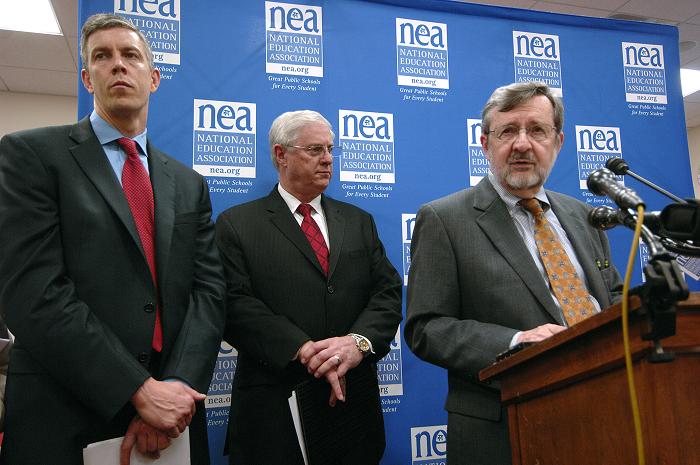 Illinois’ education blob is giving themselves a pat on the back. Their “collaboration” helped pass a bill, almost unanimously, that institutes some form of teacher evaluations based on “multiple measures” yet to be defined, and changes tenure rules, slightly. There are longer school days, strike rules requiring 75 percent of teachers to agree, but not much more. There’s not much here that helps students immediately, or parents, but makes it look like it does. Indeed, the back patting seems to be more about how it was done, not what was done.
Illinois’ education blob is giving themselves a pat on the back. Their “collaboration” helped pass a bill, almost unanimously, that institutes some form of teacher evaluations based on “multiple measures” yet to be defined, and changes tenure rules, slightly. There are longer school days, strike rules requiring 75 percent of teachers to agree, but not much more. There’s not much here that helps students immediately, or parents, but makes it look like it does. Indeed, the back patting seems to be more about how it was done, not what was done.
Says the press propaganda:
“Unlike our neighbors in Wisconsin, Ohio and other states, stakeholders here worked together to craft an aggressive bill that makes our state the leader in education reform. At a time when many teachers understandably feel under attack, this bill celebrates effective teachers, recognizes their accomplishments and helps keep them in classrooms.”
We’re so glad that no one had to flee a state to keep from voting on major changes to education. Maybe that’s because there was nothing really to flee about, no controversy, no major changes. Time will tell, but a rose by any other name is not a rose. And this bill is not reform.











 (Originally posted to the National Journal‘s
(Originally posted to the National Journal‘s  Are great schools made ON PURPOSE?
Are great schools made ON PURPOSE? Wasn’t 2010 supposed to be the Year of Education Reform? ‘Race to the Top’ was going to transform the education landscape, ‘No Child Left Behind’ was to get a facelift, school turnaround options were going to transform our lowest achieving public schools…
Wasn’t 2010 supposed to be the Year of Education Reform? ‘Race to the Top’ was going to transform the education landscape, ‘No Child Left Behind’ was to get a facelift, school turnaround options were going to transform our lowest achieving public schools… Dear Michelle,
Dear Michelle,
 (originally posted on Politico‘s
(originally posted on Politico‘s  If you’ve picked up a newspaper or turned on the evening news lately, it’s been all doom and gloom for schools, teachers and the future of American education.
If you’ve picked up a newspaper or turned on the evening news lately, it’s been all doom and gloom for schools, teachers and the future of American education.
